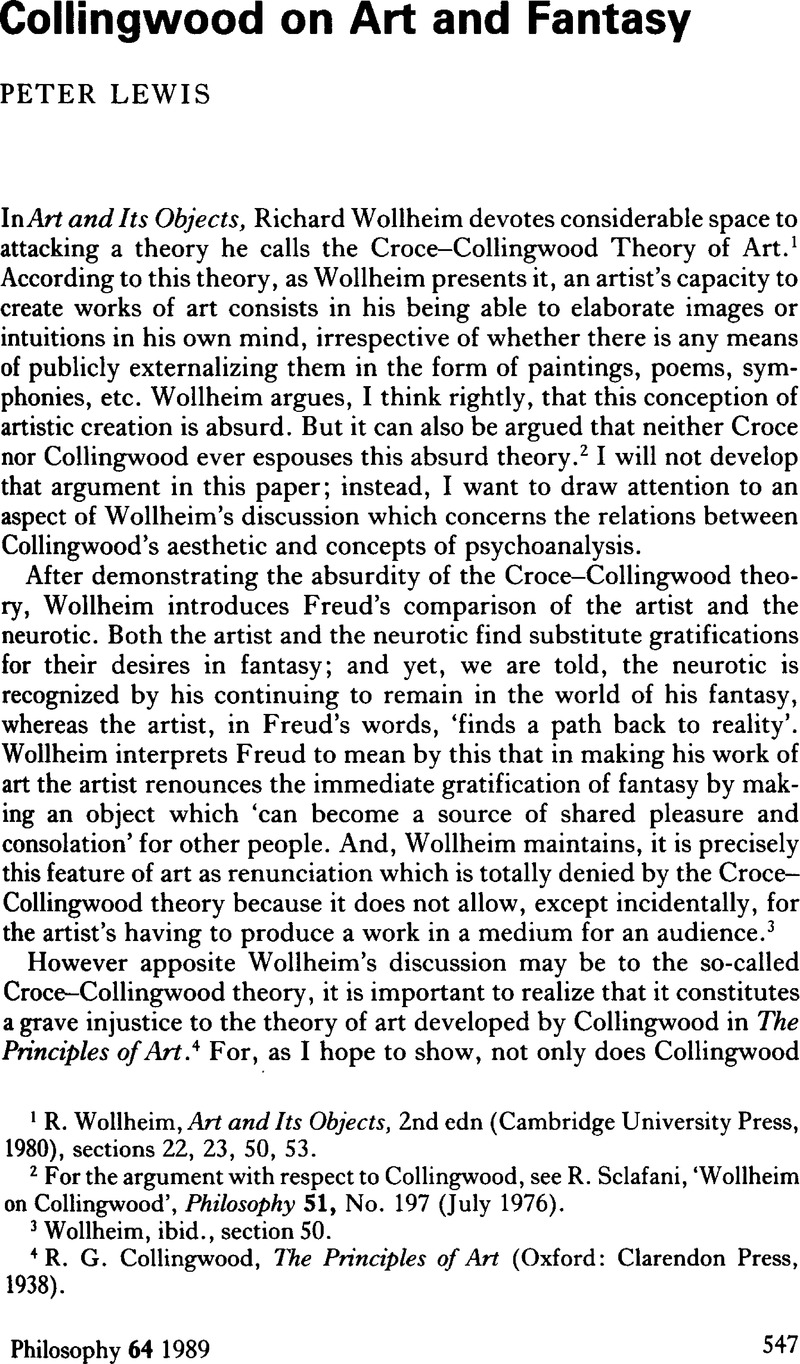Published online by Cambridge University Press: 30 January 2009

1 Wollheim, R., Art and Its Objects, 2nd edn (Cambridge University Press, 1980), sections 22, 23, 50, 53.CrossRefGoogle Scholar
2 For the argument with respect to Collingwood, see Sclafani, R., ‘Wollheim on Collingwood’, Philosophy 51, No. 197 (07 1976).CrossRefGoogle Scholar
3 Wollheim, ibid., section 50.
4 Collingwood, R. G., The Principles of Art (Oxford: Clarendon Press, 1938).Google Scholar
5 Collingwood, R. G., ‘Aesthetic’, in The Mind, McDowall, J. S. (ed.) (London: Longmans, 1927).Google Scholar
6 Collingwood, ibid., 232.
7 Freud, S., ‘Creative Writers and Day-Dreaming’, Complete Psychological Works, Strachey, James (ed.) (London: Hogarth Press, 1953–1974), Vol. IX, 142–153.Google Scholar
8 Murdoch, I., The Sovereignty of Good (London: Routledge & Kegan Paul, 1970), 59.Google Scholar
9 Collingwood, R. G., Speculum Mentis (Oxford: Clarendon Press, 1924), 61.Google Scholar
10 Auden, W. H., ‘The Guilty Vicarage’, in The Dyer's Hand (London: Faber and Faber, 1975), 151.Google Scholar
11 Murdoch, ibid., 86.
12 Leavis, F. R., The Great Tradition (Harmondsworth: Penguin Books, 1972).Google Scholar
13 This paper was delivered to the XIth International Congress in Aesthetics, Nottingham, 1988. Earlier versions were read at the University College of Wales, Aberystwyth; the University of Edinburgh; Dartmouth College, New Hampshire. I am grateful for the helpful comments offered at these meetings.